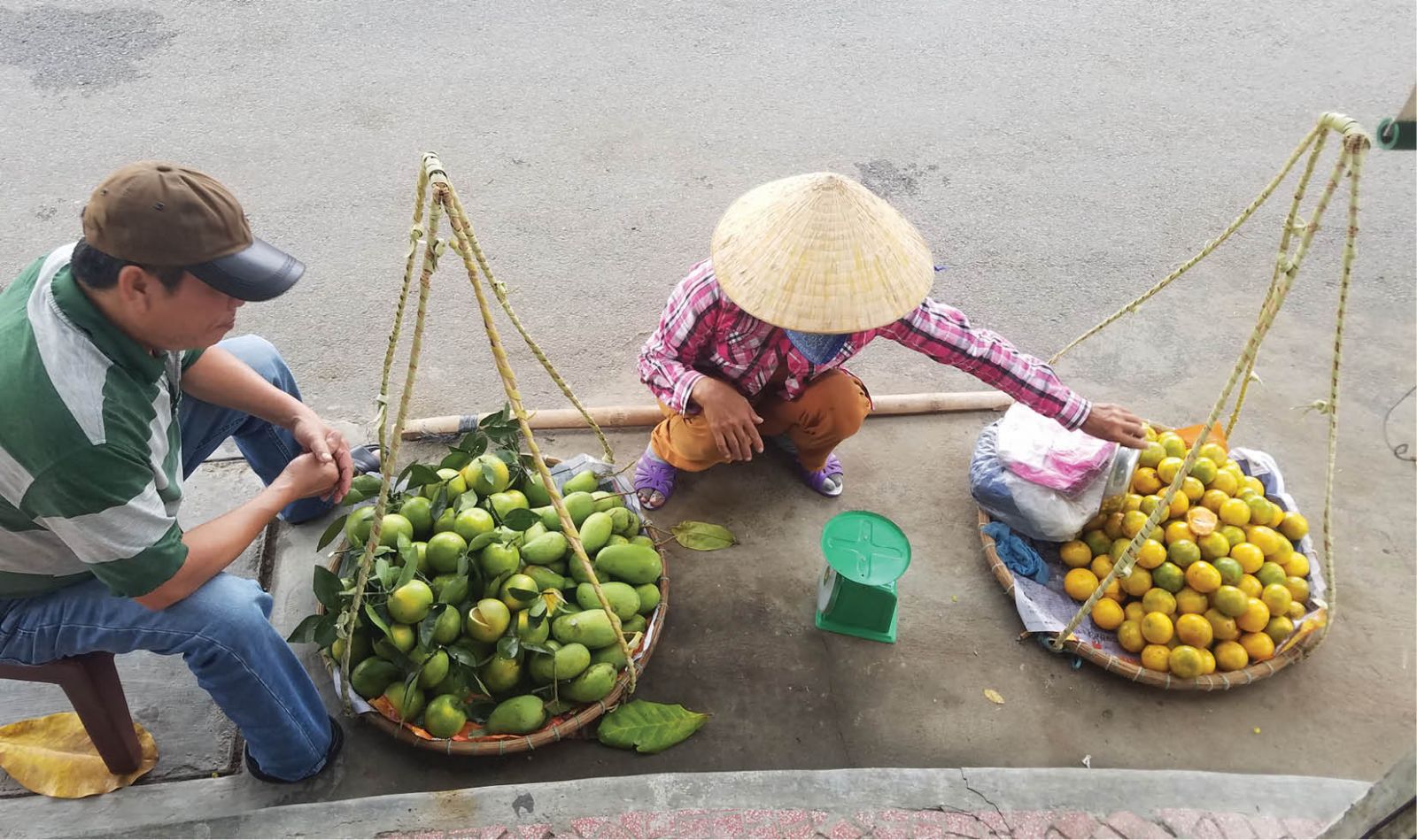
Street venders give Hue City an identity.
As early as 4 a.m., Mrs. Truong Thi Quang gets up to cook che, a sweet dish made from beans and sugar. All the ingredients were prepared the night before. It usually takes her two hours to cook 8 different kinds of che. She finishes all her cooking as soon as the sun rises.
Quang began to work as a street vender when she was 30. In her youth, she wandered all over the Citadel with her 8 pots of che, along with some plastic stools and a cooler for ice, all of which were packed neatly on her rattan and bamboo frame.
“This is che of two generations,” said she. Her mother was a street vender. When she grew up, she followed in her footsteps. Her 8 kinds of che and her husband’s cyclo drives help raise their two kids.
“Except in rainy months when everything is harder, we can get by,” confided Ms. Quang. She is now 60. She cannot carry the rattan and bamboo frame everywhere as before when she was strong. Instead she sits selling che on Le Huan St. She sells well in summer months and less in the rainy season. But she tries to maintain her job.
Hue is known as a special city with five cultural heritages recognized by UNESCO. There are very modest things which help make Hue legendary.
Video clips about Hue usually feature street venders together with historical relics. Street venders help introduce the peaceful life of the people of the former capital city. Sometimes it is just the sounds of street venders shouting their wares; sometimes, it is the image of their footsteps on Truong Tien Bridge, or a rattan and bamboo frame passing the market or in the Citadel.
Though street venders appear in video clips as briefly as a few seconds, they are still messages to the viewer.
I am certain that no directors and cameramen want to miss those images in their films.
The poet Nam Tran described street venders in Hue in his poem “Hue, Summer Nights”: “Hai tay xach hai vim/ Mot vai mu le te/ Tieng non rao lanh loi/ Choc: “Ai an che.” (Two pots in two hands/Some women wandering/ Shouting loudly their food/ Now and then “Who wants che?”)
Nam Tran’s poem about street venders in the imperial city was composed in 1939. Seventy years have passed with lots of changes, but street venders look the same. They are full of peaceful simple living. Their shouting become memories which Hue natives bring away with them.
Quang represents the class of street venders in the city. They can be found everywhere in Hue. Their rattan and bamboo frames contribute to the feeling of calmness and peacefulness of the land.
Street food is something very Vietnamese. But only in some cities does it become an identity. When life is becoming more hasty, one cannot go to the market every day. Buying food from wandering street venders is a sensible choice.
In big and modern cities with skyscrapers, street venders look mismatched. But in a poetic city like Hue, they can go together well.
Of course, to Ms. Quang, it is just a way to earn her living. She keeps reminding herself that she must treat all people well so that they would come back. “It all depends on the seller’s behaviors.”
She knows nothing about her contribution to the heritage city. Nor does she notice street venders like her are the highlight in video clips about Hue. To those who live hand to mouth, such things like culture or heritage are not what they care about. But Hue City and its street venders are inseparable.
Not only in video clips do street venders show up. There always appear street venders in movies and art programs about Hue.
At Hue Festival 2018, I saw sisters and women, wearing ao dai, sat selling che, beo, nam, loc (specialities of Hue) at a corner on 23th August St., with diners sitting around. That image makes Hue look even more beautiful.
“Who wants beo, nam, loc?” Each word is stressed in a slow, lengthened and highlighted way in the calm atmosphere of Hue, which makes the listener feel nostalgic. It is impossible to talk about street venders without mentioning their ware shouting. Hue natives living far away from home always miss those memory-evoking sounds.
Story and photo: Nguyen Dac Thanh